
A8_Microfluidics_fundamentals_II
.pdf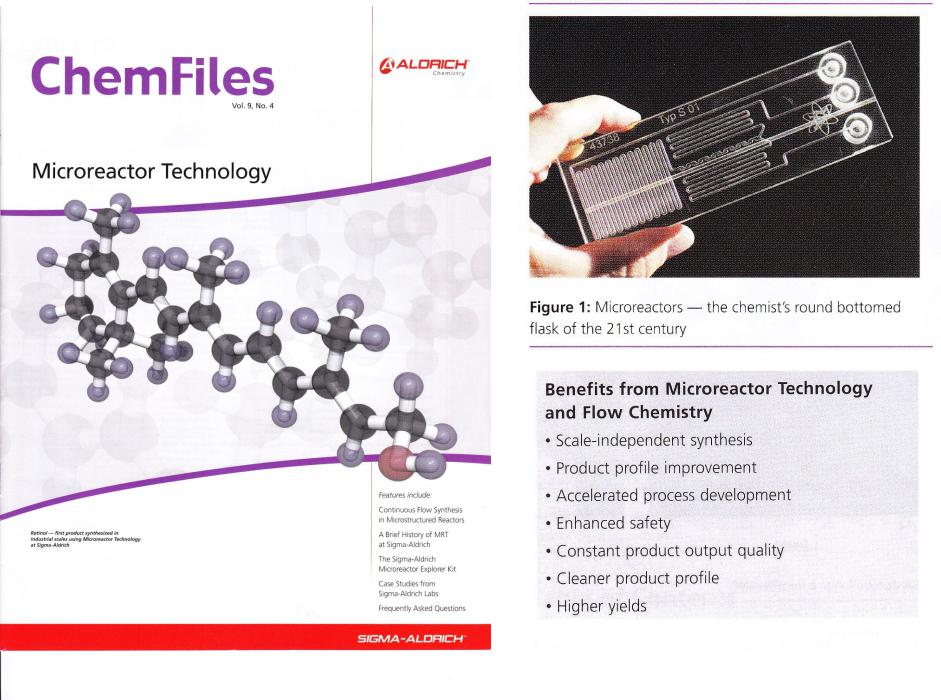
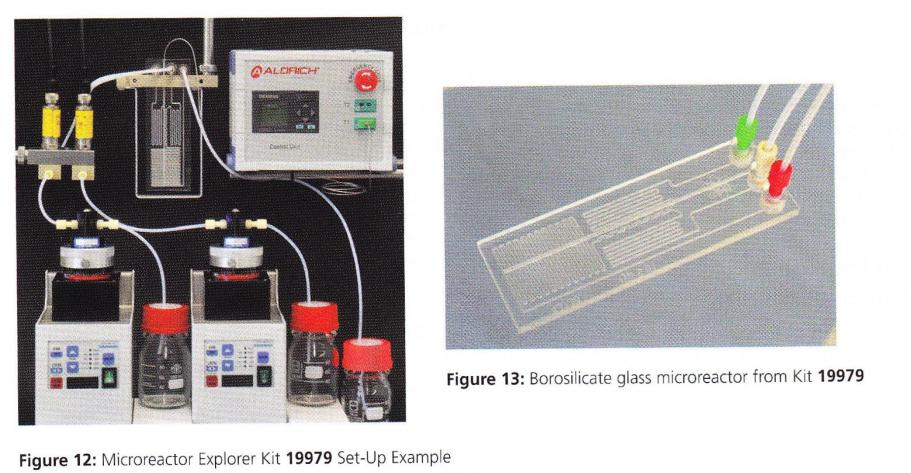
Commercial microreactor kit

Microchemical systems
– scale down and out
Klavs Jensen, MIT
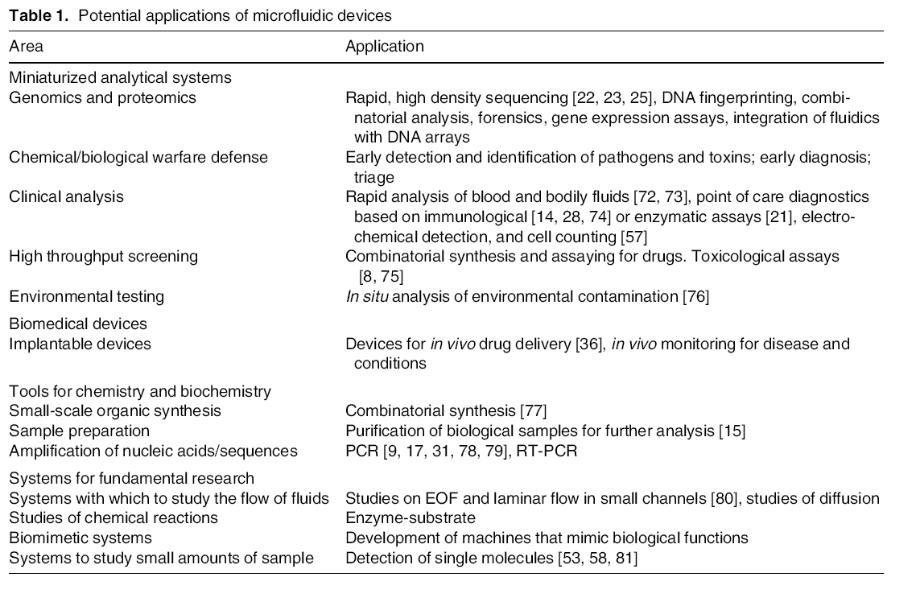
microfluidic chemical and biological analysis has been successfully applied to DNA sequencing, protein separation, single cell analysis, sample preparation/preconcentration, biomolecular sorting, and even single molecule detection
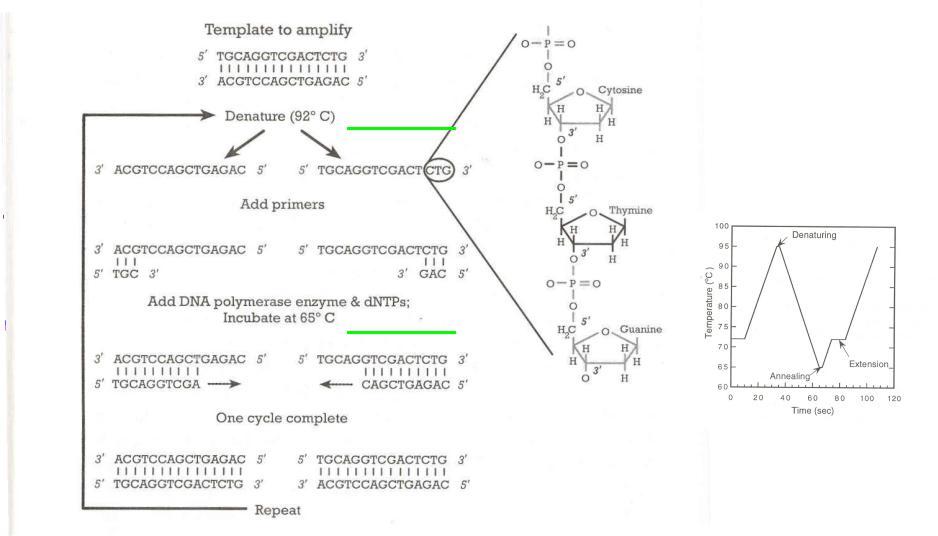
Miniature biochemical reaction chambers
PCR on a sylicon chip - I
(annealing)
(extension)
Temperature cycle for
a commercial macro-scale PCR machine
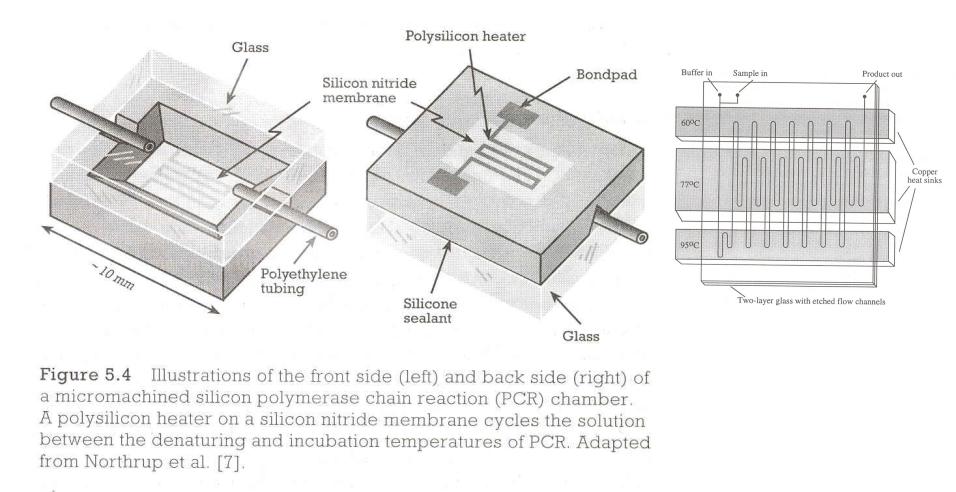
Miniature biochemical reaction chambers
PCR on a sylicon chip - II
•small thermal mass of chamber and fluid allows very fast temperature ramps
•small volume chamber
•many chambers can be arrayed
Continuous-flow PCR system
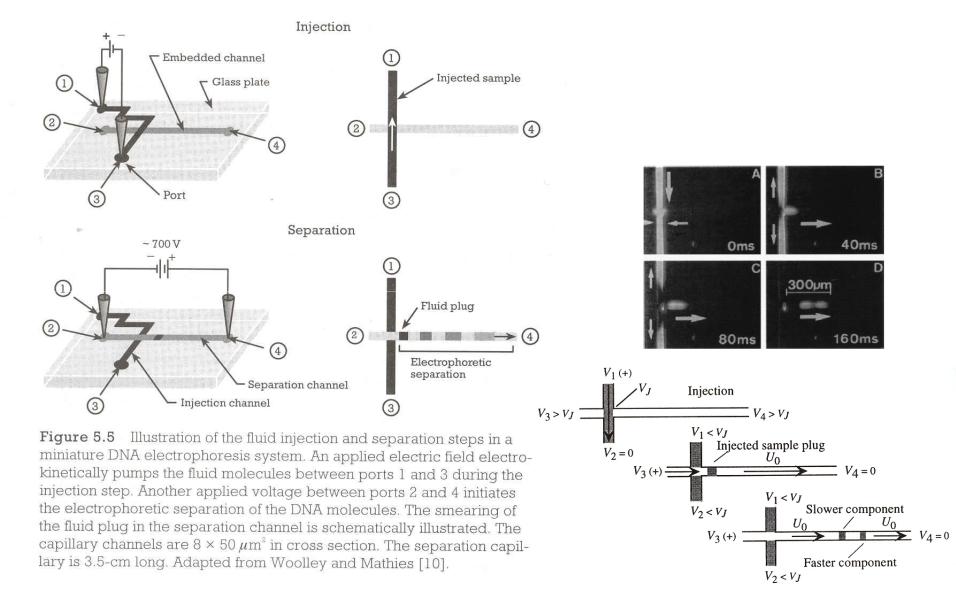
Electrophoresis on a chip
• small volumes
• high speed
• low voltage
• can be arrayed
• can be incorporated into a TAS system

Nanofluidic Coulter counter
passage of particle through pore disrupts electrical current betwen the two reservoirs – can detect single crossing events of submicron particles
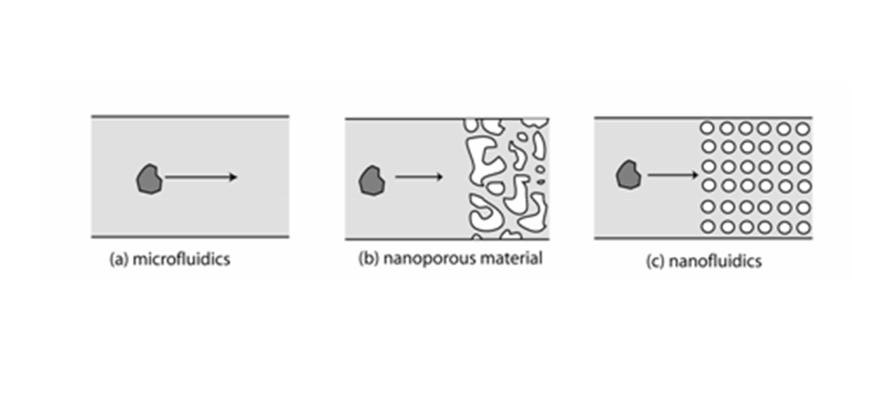
Microfluidics vs. nanofluidics
10-500 µm |
10-1000 nm |
Comparison between microfluidic and nanofluidic biomolecule separation:
(a)In microfluidic device, friction between liquid and the molecule determines the molecular mobility (often same mechanism as conventional analysis)
(b)In nanoporous material such as gel, molecules are filtered or sieved by random nanostructures
(c)In nanofluidic devices, the molecular sieve structure is well defined and regular
(b) and (c) interaction between the fluidic structure and molecules play dominant role, but in (c) it is easy to control and analyse
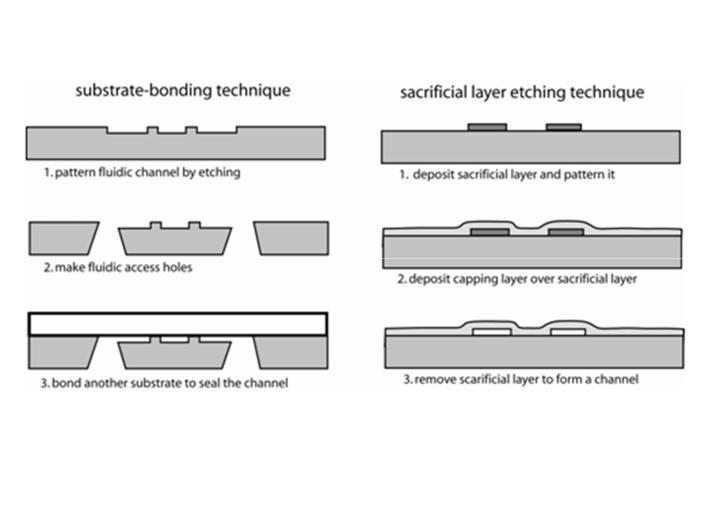
Nanofluidic fabrication
Two most common method for fabrication of nanofluidic devices.
(a) substrate-bonding method (b) sacrificial layer etching method.
